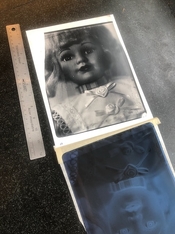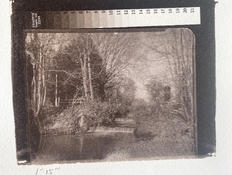alecrmyers
Member
- Joined
- Sep 24, 2009
- Messages
- 97
- Format
- Large Format
I've posted about this elsewhere on this forum in the alternative processes thread but I think it deserves a bit more exposure (no pun intended) than being buried at the end of a six (so far) page thread, and it's really just an offshoot of traditional BW chemistry rather than an "alternative" process as it's understood, so I hope that's ok with the moderation team,
I've resurrected/adapted/renewed the chemistry for diffusion transfer printing (popularized by Polaroid in the peel-apart pack film) and applied it to 8x10 format. Material cost (including the film) is about $0.50 per exposure. The prints come out dry and ready for display. Other than the materials all you need is a cheap office-type laminator.
Film is Fuji x-ray film HR-U widely available for cheap on Ebay (although other films will probably work too) and the paper and developer are things I have developed. It seems to work at an EI of about 200-400.
There's some work to do on quality control, as you can see there are some image defects, and I'm certainly no master of the view camera movements, but it's a lot of fun peeling off the image to see what comes out!
I've resurrected/adapted/renewed the chemistry for diffusion transfer printing (popularized by Polaroid in the peel-apart pack film) and applied it to 8x10 format. Material cost (including the film) is about $0.50 per exposure. The prints come out dry and ready for display. Other than the materials all you need is a cheap office-type laminator.
Film is Fuji x-ray film HR-U widely available for cheap on Ebay (although other films will probably work too) and the paper and developer are things I have developed. It seems to work at an EI of about 200-400.
There's some work to do on quality control, as you can see there are some image defects, and I'm certainly no master of the view camera movements, but it's a lot of fun peeling off the image to see what comes out!
Attachments
Last edited:














